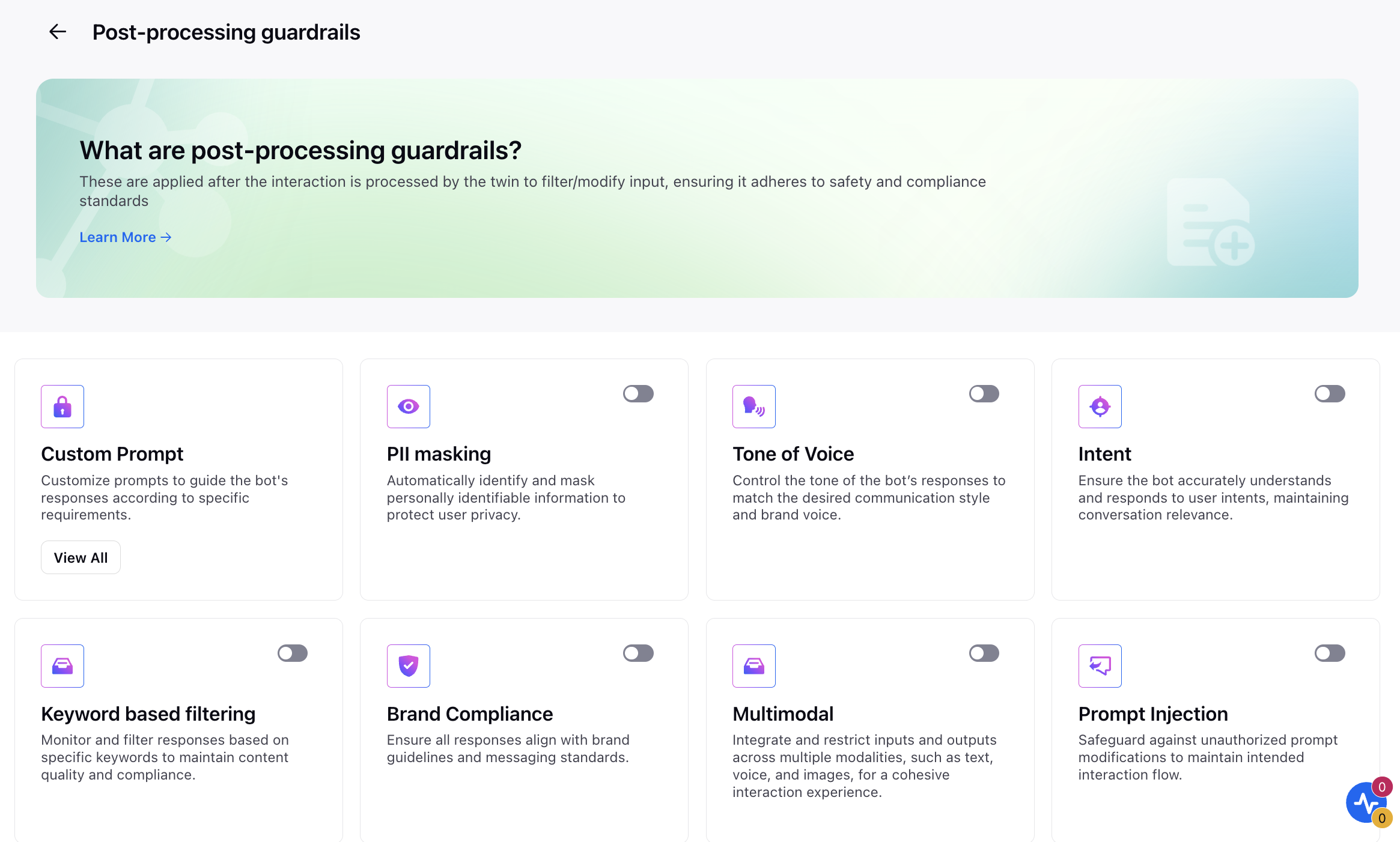Guardrails Library
Updated
Guardrails serve as vital components within the framework of a Digital Twin, offering a structured approach to ensure safe and ethical interactions. These advanced features establish boundaries, enabling the Digital Twin to operate within predefined constraints while delivering consistent and reliable responses. Guardrails encompass various types, each tailored to address specific needs and requirements.
Overall, Guardrails play a pivotal role in enhancing the effectiveness, reliability, and integrity of Digital Twin interactions, thereby fostering trust and confidence among users and stakeholders.
Note: Digital Twin is currently in limited availability. Sprinklr is seeking definition partners for this feature. For further information, please contact your Success Manager or the Product Team.
To Create Guardrails
Click Customize next to Step 3· Setup Guardrails.
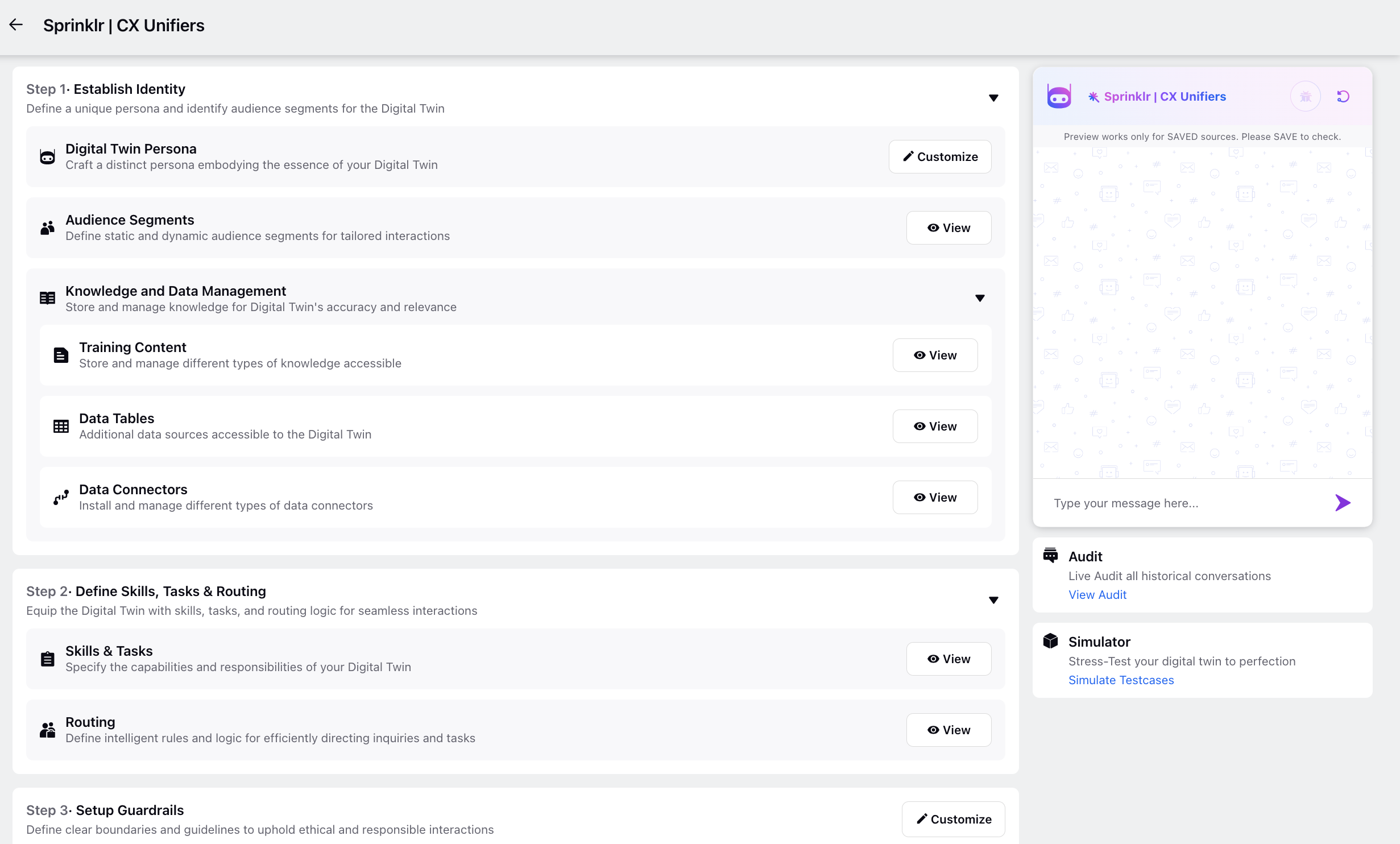
Next, choose from the following types of guardrails:
Pre-processing guardrails: These are applied before the interaction begins to filter or modify input, ensuring it adheres to safety and compliance standards.
Twin processing guardrails: These are applied while the interaction is being processed by the Twin to filter or modify input, ensuring it adheres to safety and compliance standards.
Post-processing guardrails: These are applied after the interaction is processed by the Twin to filter or modify input, ensuring it adheres to safety and compliance standards.
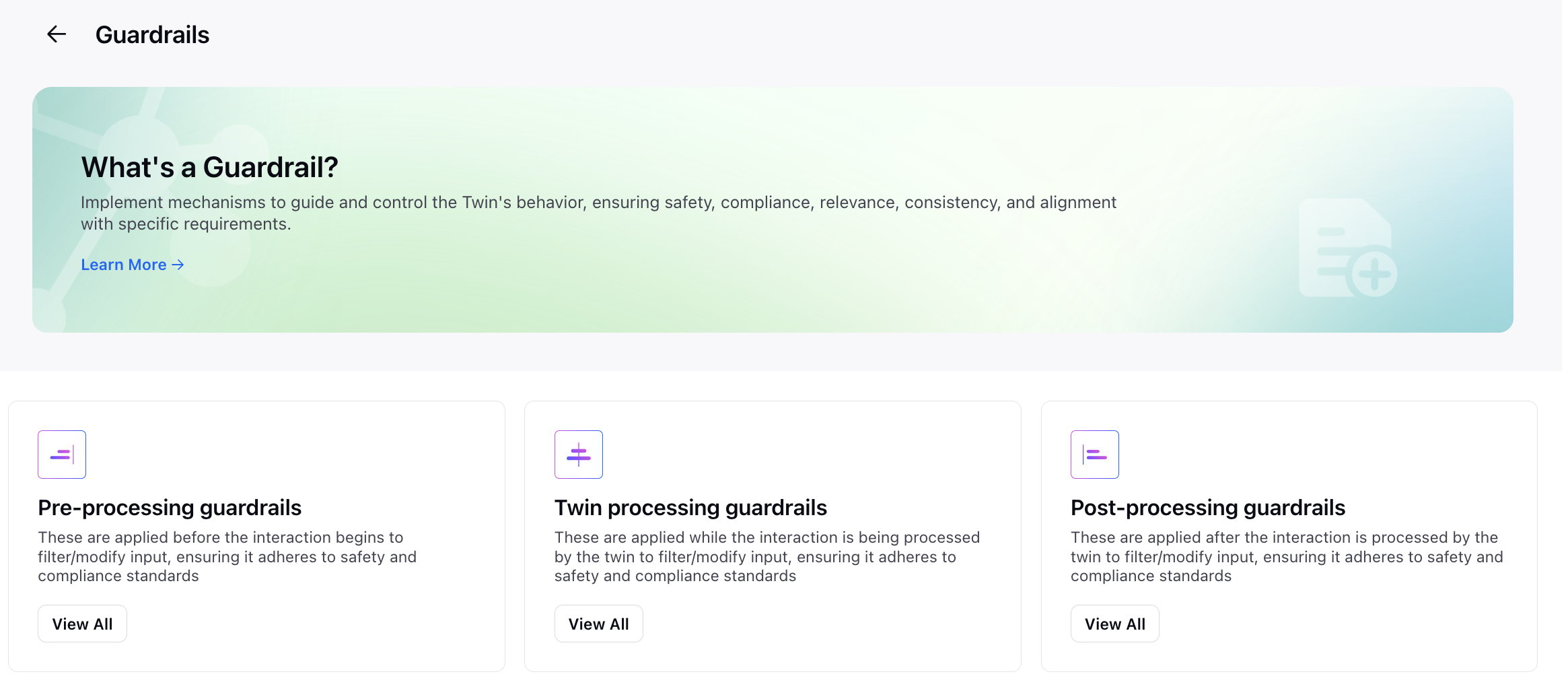
For Pre-processing guardrails, you can choose from the following options: (This is currently in limited availability.)
PII masking: Automatically identify and mask personally identifiable information to protect user privacy.
Topical guardrails: Restrict the bot's responses to predefined topics, ensuring relevance and appropriateness.
Profanity: Filter out and prevent the use of profane or inappropriate language in the responses.
Custom Prompt: Customize prompts to guide the bot's responses according to specific requirements.
Jailbreak: Detect and block attempts to bypass or manipulate the bot's safety mechanisms.
Keyword-based filtering: Monitor and filter responses based on specific keywords to maintain content quality and compliance.
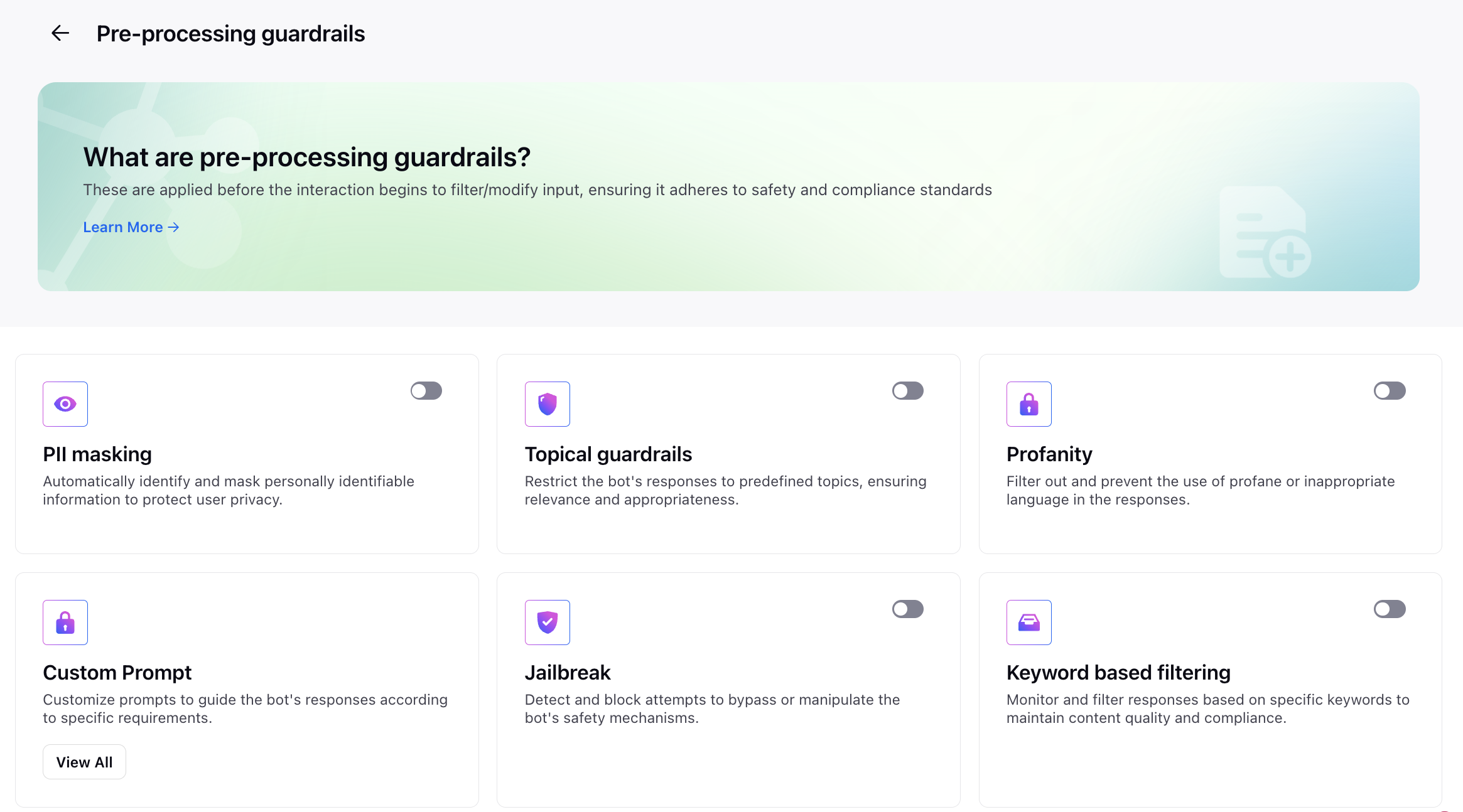
For Twin processing guardrails, you can choose from the following options: (This is currently in limited availability.)
Rule-Based Guardrails: Apply predefined rules to guide and control the twin's behavior and responses in various scenarios.
Form-Based Guardrails: Ensure responses adhere to a structured format, useful for maintaining consistency in form-based interactions.
Function Adherence: Ensure the bot's responses follow predefined functional guidelines, aligning with specific use cases.
Function Injection: Prevent the embedding of specific functions or code within the bot's responses.
Prompt Injection: Safeguard against unauthorized prompt modifications to maintain the intended interaction flow.
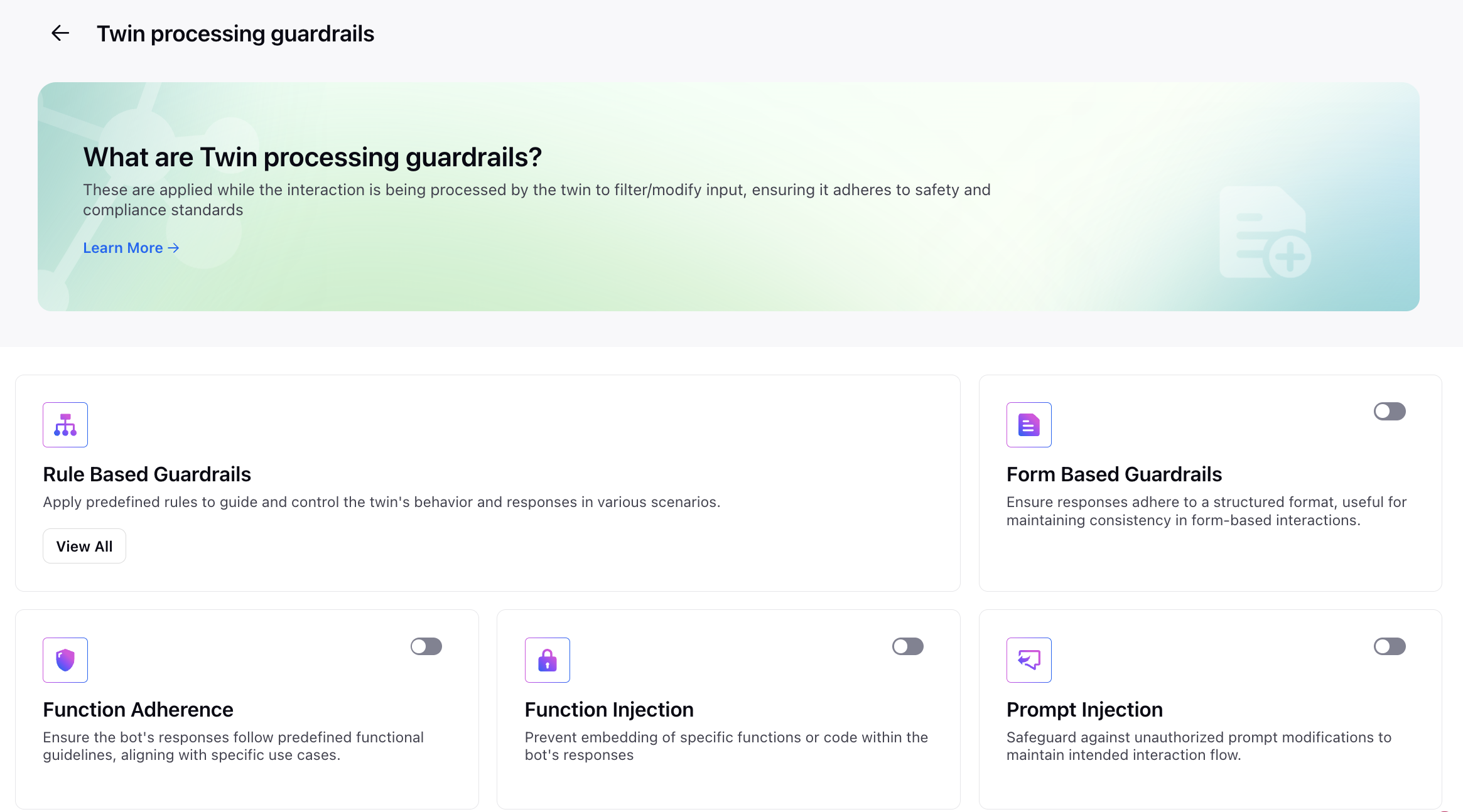
For Post-processing guardrails, you can choose from the following options: (This is currently in limited availability.)
Custom Prompt: Customize prompts to guide the bot's responses according to specific requirements.
PII Masking: Automatically identify and mask personally identifiable information to protect user privacy.
Tone of Voice: Control the tone of the bot’s responses to match the desired communication style and brand voice.
Intent: Ensure the bot accurately understands and responds to user intents, maintaining conversation relevance.
Keyword-Based Filtering: Monitor and filter responses based on specific keywords to maintain content quality and compliance.
Brand Compliance: Ensure all responses align with brand guidelines and messaging standards.
Multimodal: Integrate and restrict inputs and outputs across multiple modalities, such as text, voice, and images, for a cohesive interaction experience.
Prompt Injection: Safeguard against unauthorized prompt modifications to maintain the intended interaction flow.
